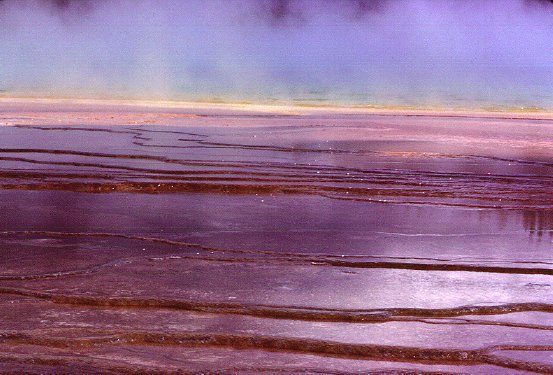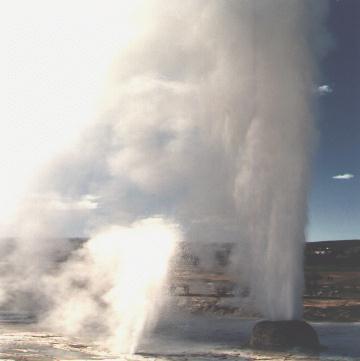

Yellowstone National Park--some say it is America's greatest contribution to world culture-- the best idea we ever had. Yet when President Ulysses S. Grant signed the Yellowstone Park Act on March 1, 1872, the preservation of a park more than 3,300 square miles in size was a radical idea. This was a time when natural resources were thought to be limitless, and conservation was considered wasteful. With the signing of the Act, a new era in conservation began.
Historically, in Europe, "parks" were owned by the wealthy elite for their use alone. In early America, particularly Puritan New England, the attitude toward the value of work resulted in the perception that idle time led to wickedness, and nature was viewed as frightening and something to be subdued. But in the 1800s the philosophy of romanticism evolved in Europe and spread to America. Men such as Henry David Thoreau, Ralph Waldo Emerson, and Henry Wadsworth Longfellow wrote about nature in a new way. They described it as wondrous, beautiful, and restorative. In the mid-1800s American cities began setting aside tracts of land for public parks such as Central Park in New York. Attitudes were changing.
 In 1870 and 1871, expeditions were sent to
explore the area we now know as Yellowstone
National Park. The members of those expeditions
and many other Americans, influenced by this new
way of viewing nature, worked tirelessly to have
the Yellowstone Park Act introduced into
Congress in December 1871. Congressional
debate focused on the "worthlessness" of the
Yellowstone country for any "useful" purpose. The
lack of any known reserves of timber, minerals, or
other resources of any economic value was
emphasized. Because most of the area was at or
above 7,000 feet in elevation and received snow
during much of the year, agriculture and settlement
were considered difficult at best. Though
Congressional opposition was weak, the necessity
of preserving a place of such little value was
questioned. In order to secure passage of the bill,
supporters promised that no funding from
Congress would be requested for the park's
administration. Indeed, Yellowstone received no
federal funding until 1877 when it was recognized
that without someone in charge, there would soon
be nothing left to see as poaching and vandalism
were rampant.
In 1870 and 1871, expeditions were sent to
explore the area we now know as Yellowstone
National Park. The members of those expeditions
and many other Americans, influenced by this new
way of viewing nature, worked tirelessly to have
the Yellowstone Park Act introduced into
Congress in December 1871. Congressional
debate focused on the "worthlessness" of the
Yellowstone country for any "useful" purpose. The
lack of any known reserves of timber, minerals, or
other resources of any economic value was
emphasized. Because most of the area was at or
above 7,000 feet in elevation and received snow
during much of the year, agriculture and settlement
were considered difficult at best. Though
Congressional opposition was weak, the necessity
of preserving a place of such little value was
questioned. In order to secure passage of the bill,
supporters promised that no funding from
Congress would be requested for the park's
administration. Indeed, Yellowstone received no
federal funding until 1877 when it was recognized
that without someone in charge, there would soon
be nothing left to see as poaching and vandalism
were rampant.
Our perception of Yellowstone has changed
dramatically since the Congressional debates of
1871-1872. Today the park is host to more than 3
million visitors each year from all over the world.
While still fairly remote, it is no longer inaccessible.
Its geysers, hot springs, waterfalls, and wildlife are
no longer thought to be worthless, but are
considered priceless. The park has become an
integral part of our culture and stands as a symbol,
not only of American democracy, but also of the
importance of preserving wild places for everyone.
As we celebrate Yellowstone's 125th anniversary,
we are reminded of the vision of those early park
supporters who believed that Yellowstone's
resources should be preserved not for their
economic value but for their intrinsic natural
beauty. We are the beneficiaries of their efforts to
have this special place set aside "for the benefit and
enjoyment of the people."
![]() Comments
and Questions are Welcome.
Comments
and Questions are Welcome.
This site is hosted by Geocities. Get your own Free Homepage.